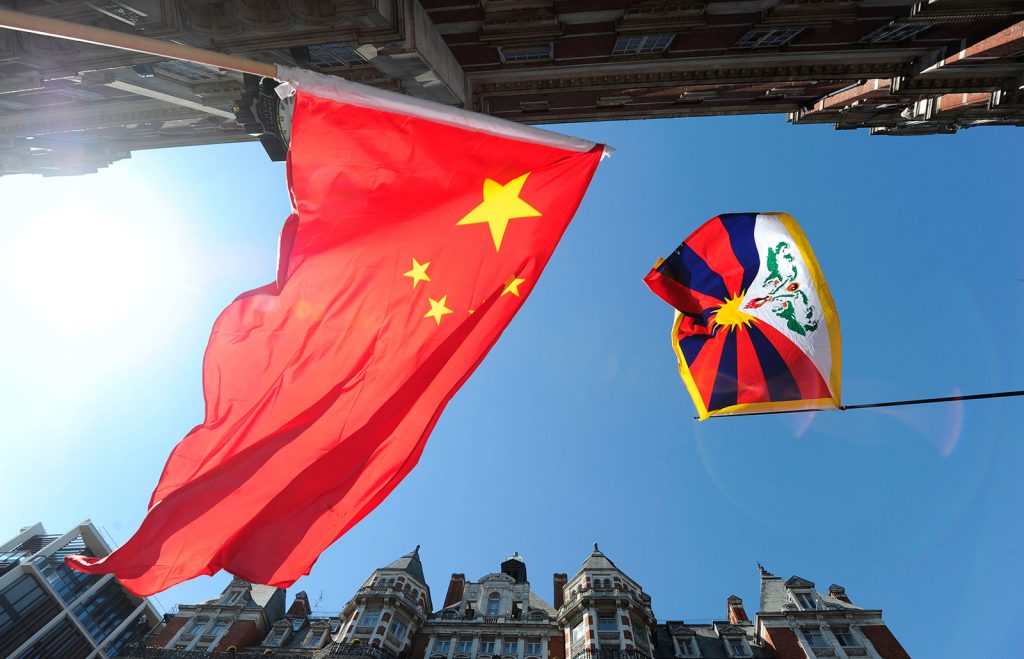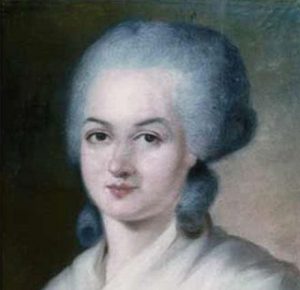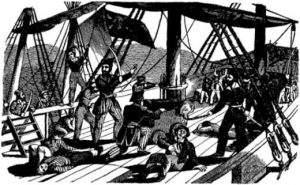Imagine at the age of twenty-three having to walk at night across the Himalayan mountains, to survive and avoid imprisonment, torture, and certain death. This is the only choice the 14th Dalai Lama, Tenzin Gyatso, could make to avoid being imprisoned and most likely killed by the Chinese military.1 This set him on a perilous journey that required him to travel by night, dressed as a soldier, for two weeks and across the tallest and most lethal mountain range, the Himalayas. 2 This was his only option because the fate of his people and their ancient culture depended on his survival.3

Tibet is nestled between the Southwestern border of China, and the Northeastern border of Nepal. Prior to China’s invasion of Tibet in 1950, Tibetan society was governed by a caste system centered around the Buddhist principle of reincarnation, the religion for a country ran as a Theocracy.4 Buddhist reincarnation suggests that if an individual lived a virtuous life, following his or her death, he or she reincarnates into the next highest caste and enjoys said caste’s privileges as the reward of a deeply humble and virtuous life. The one who served as a symbol of unity for the people and who ruled the country by maintaining Tibetan traditions in combining the duties of the spiritual leader and political leader of Tibet is the Dalai Lama.5 The Dalai Lama is not representative of any one school of Buddhist thought, instead he advocates traditional Buddhist values and the preservation of Tibetan traditions.

During the near two-hundred-year rule of China’s Qing Dynasty (1720- 1912), the Dalai Lama was the head of Tibet’s government, with the government enjoying almost complete sovereignty at times. Following the collapse of the Qing Dynasty, in 1914 a convention was held in which British India, China, and Tibet agreed to make Tibet semi-autonomous. 6 Under the agreement China, which never had full control over Tibet, handled Tibet’s foreign relations while Tibet handled its internal affairs and maintained an army. However, thirty-five years later, the plan to rob Tibetans of their autonomy and rights was set in motion.
In 1949, Mao Zedong established China as a communist state known as the People’s Republic of China. A mere two months later Mao ordered the “liberation” of Tibet from its Buddhist leaders.7 The Chinese government painted the Dalai Lama as the architect of a regressive and feudal regime, and promoted themselves as a heroic force of change. 8 Mao believed that Tibet only enjoyed autonomy due to the machinations of foreign influences. He cited Chinese traditions that claimed Tibetans were one of the five races that made up China as evidence that Tibet’s rightful place was as a province of China.9 In 1950, the Chinese military invaded Tibet and defeated its army. Instead of occupying the country, the Chinese government invited Tibetan officials to negotiate an agreement between the two. At the meeting, the Tibetan representatives signed a Seventeen-Point Agreement, acknowledging China’s sovereignty over Tibet.10 The Tibetan government refuted this agreement’s legitimacy, claiming that the delegation sent was not authorized to sign any such documents, nor were they allowed to communicate back home the nature of their situation. It was this combination of Tibet’s military defeat and forced signing of the agreement that set the stage for Mao’s occupation of Tibet and the erosion of Tibet’s freedom and rights.
In 1951, China began exerting its newly affirmed control over Tibet by sending troops into the country and implementing communist reforms. The first reform implemented was the settling Tibetans who were typically a nomadic people and the settlement of more Chinese citizens to the region. The second reform instituted was land redistribution, crops were confiscated by the Chinese government and given to a central authority with only a small amount returned to Tibetans. However, land redistribution was not implemented uniformly across Tibet, reforms were inexplicably delayed in western Tibet, and society largely continued unchanged. Eastern Tibet on the other hand rebelled in 1956, with monasteries and noblemen leading the resistance against Chinese Communists. Guerilla fighters were successful in capturing control of Southern Tibet, however this uprising was costly. The Tibetan uprising of 1959 alone costing anywhere from 85,000 to 87,000 lives, and the response by China resulted in 10,000 to 15,000 Tibetans dying over the course of three days. Fearing the capture of the Dalai Lama, Tibetan citizens surrounded his residence in an effort to protect him.11 Tibetans chose to stand against the Chinese troops outraged by the previous nine years of egregious human rights violations that included many soldiers raping and murdering Buddhist nuns and monks who resisted the reforms.
With this opportunity to escape provided to him by his people the Dalai Lama began is harrowing thirteen-day trek on foot through the Himalayas to India. Upon arriving in India, representatives sent by Prime Minister Nehru welcomed him and the refugees that had followed hoping to escape the atrocities currently being inflicted upon their homeland. The Dalai Lama worked alongside his people who fled to establish the Tibetan government in exile in Dharamshala, Himachal Pradesh, India.

During his time as both the head of the exiled government and after having stepped down from said position the Dalai Lama has worked furiously advocating not just the rights of Tibetans, but people all across the globe.12 The Dalai Lama has spoken on a variety of social issues ranging from the environment, to economics, reproductive health, sexuality, interfaith dialogue, women’s rights, and nonviolence. “Furthermore, everyone appreciates affection and at the same time has the potential for showing affection to others. With this in mind, I have found that friendship and understanding can develop.”13 All while being unable to return to his home of Tibet and not knowing how his subsequent reincarnation was to be found. His existence challenges the Chinese government’s blatant disregard for human rights, which include massacres, tortures, killings, bombardment of monasteries, extermination of nomad camps, and violating at least sixteen articles of the Universal Declaration of Human Rights. Now 81 years old, he may be the last Dalai Lama. The Dalai Lama is traditionally found following his reincarnation by the Panchen Lama, someone who is akin to our U.S. Vice President. Along with the numerous human rights violations committed the Chinese government also arrested both the Panchen Lama and his family, then named their own Panchen Lama in 1995, thereby creating uncertainty as to whether the next reincarnation would follow Tibet’s traditions or serve the Chinese government’s interests.14 To dispel this fog of doubt and concern, the Dalai Lama announced a plan to determine the future of his reincarnation, upon him turning ninety, the Dalai Lama will convene with a trust to decide if it is necessary for a 15th Dalai Lama to be recognized. If it is determined that his reincarnation is necessary, then the Gaden Phodrang Trust will search for and recognize the 15th Dalai Lama, along with the caveat that any person chosen by the Chinese government is to be dismissed by all people.15
Despite attacks on his home, his religion, and himself, the Dalai Lama persists in refusing to call for violence against China. For over fifty years this man, now in the twilight of his life, has spread his message of peace and understanding to the world hoping he could help country and his people one day see the restoration of their basic human rights following years of blatant abuse and maltreatment.16
- Charles George and Linda George, The Dalai Lama, (People in the News. Detroit: Lucent Books, 2010), 50-51. ↵
- Latson Jennifer, How and Why the Dalai Lama Left Tibet, www.time.com. ↵
- Charles George and Linda George, The Dalai Lama, (People in the News. Detroit: Lucent Books, 2010), 37. ↵
- Charles Bell, Tibet and Its Neighbors, (Vancouver: Pacific Affairs, University of British Columbia, 1937), 428-440. ↵
- Robert Thurman, Why The Dalai Lama matters, (New York: Atria Books, 2008), 3. ↵
- Jennifer Stock, Global Events: Milestone Events Throughout History: Vol 2: Asia and Oceania, (Farmington Hills: Gale, 2014), 373-376. ↵
- Charles Henry Alexandrowicz-Alexander, The American Journal of International Law: Vol. 48: No. 2, (Cambridge: Cambridge University Press, 1954), 265-274. ↵
- Charles George and Linda George, The Dalai Lama, (People in the News. Detroit: Lucent Books, 2010), 9. ↵
- Elliot Sperling, Tibet and China: The Interpretation of History Since 1950: China Perspective Vol 3, (2009), 25-26. ↵
- Alex McKay, The History of Tibet: Vol 3 The Modern Period: 1859- 1959, (London and New York: Routledge Curzon, 2003), 607-609. ↵
- Charles George and Linda George, The Dalai Lama, (People in the News. Detroit: Lucent Books, 2010), 47-48. ↵
- His Holiness The Dalai Lama and Howard C. Cutler, The Art of Happiness,(New York: Riverhead Books, 1998), 2. ↵
- Charles George and Linda George, The Dalai Lama, (People in the News. Detroit: Lucent Books, 2010), 64. ↵
- Eric A. McGuckin, Tibet: Struggle for Independence.” In History Behind the Headlines: The Origins of Conflicts Worldwide, (Farmington Hills: Gale, 2003), 272. ↵
- The Dalai Lama, Reincarnation, (Dharamsala: The Dalai Lama, 2011). ↵
- Gary L. Anderson and Kathryn G. Herr, Encyclopedia of Activism and Social Justice, Vol. 3, (Thousand Oaks: Sage Publications Inc, 2007), 417-418. ↵



51 comments
Pamela Callahan
This was a very interesting, informative article. I learned about the Dalia Lama and his thirteen day on-foot trek in one of my high school classes. I have always found the religious traditions of other countries to be very fascinating and I enjoyed reading about them some more. The Dalai Lama must have been very brave to do something like this and I’m sure that made his followers even more moved by him.
Kaitlyn Killebrew
Before reading this article I was unaware of what a Dalia Lama was. The first time reading through this article I thought it was a specific person but it is actually the political and spiritual leader of Tibet, so it makes me question whether they have separation of church and state like we do. China stormed int Tibet, believing that it should be a province under Chinese rule, and forced them to sign their rights away. Something that confused me was that the article states that the Dalia Lama helped through the trek through the Himalaya’s as well as fighting for the rights of the people of Tibet but was it more than one person that was Dalia Lama at this time?
Greyson Addicott
This article does a great job in explaining the ideas and practices circulating around Maoist China at the time of the “liberation” of Tibet. It is saddening to realize just how little people know about post WWII China, because Maoist China is, hands-down, one of the most interesting nations to take the time to study. Overall, the article is very well written, and does not break chronological order a single time. All things considered, it is well deserving of a nomination!
Luisa Ortiz
Robert, I must say that your introduction is really good! it set the whole mood and it helped me understand you as a writer! before reading your article I had little or I will say no knowledge whatsoever about the topic. Now I can get a sense and understanding, so thank you, for writing something that is well explained! I want to congratulate you on being nominated for Best Article in the Category of “International Studies”.
Samantha Luckey
This is an interesting article regarding an unexpected topic. I found this article to bring a new enlightened view on the purpose of the Dalai Lai, and his role for spreading peace. This author was able to establish a historical background that engaged the reader to continue reading on, as well as, giving the reader enough contextual information to leave knowing a little more than before they started reading.
Natalie Thamm
This was a really interesting article with a great introduction. Before reading this article, I had almost no real knowledge about Tibetan history or the role of the Dalai Lama in the Tibetan government and I think this article did a good job of describing both. The efforts that the 14th Dalai Lama had to go through to just survive and work to better his country are inspiring and courageous.
Hailey Stewart
To my surprise, I knew a lot of the names mentioned in this article, however, I did not know the significance they served. This article was very informative, and I enjoyed reading the story of such a courageous and peaceful man. I like the message of the Dali Lama, and I am really glad that there is such a person that exists in Asian politics when it comes to the topic of state sovereignty.
Irene Astran
This is another story to show how refugees or migrants must travel from a range of atrocities. In many situations now I believe people become desensitized because they chose not to open themselves up to feel the full weight of the issue. I appreciate that the Dalai Lama embarked on the journey himself to feel the full exhaustion and pains that those traveling must have felt.
Didier Cadena
This was a very interesting article. I had no idea how important the Dalai Lama was for spreading peace. It was very interesting to see how hard he worked to see the restoration of human rights after him and his people suffered injustices for such a long time. The article does a great job of putting all of the information together and still keep the reader engaged in it.
Jasmine Rocha
This article was nice and very unexpected, I thought it was going to be a political article on China and Tibet. I did have a little of politics but not really, it was a story on how Dalia Lama of Tibet did something dangerous and brave for his people. The people of Tibet had a different reaction to what how countries usually react when it comes to violent reactions.